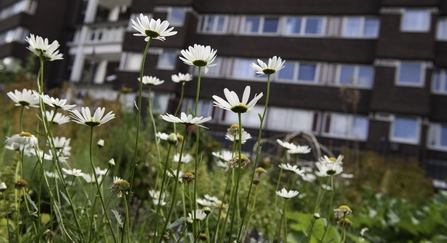The charities are encouraging gardeners to experiment with a new look lawn in 2023 for the benefit of wildlife and also the wider environment. They are inviting people to raise the blade on their mower and cut their grass less regularly, embrace daisies, dandelions, clovers and other naturally flowering plants, and even grow container lawns if space is at a premium.
Lawns left to grow long are shown to help mitigate flooding by better soaking up rainwater, counter the heat island effect in urban areas through their cooling properties, and capture pollutants. They are also better at resisting browning during dry spells than short grass owing to their longer roots. This means that their benefits continue into the height of summer, and provide all-important habitat for a whole host of insects including ants, bees and butterflies.
Five ways to love your lawn this year:
· Reduce the frequency of mowing to once every three to four weeks to allow flowers such as dandelion and speedwell to bloom and help pollinators.
· Keep some areas short, such as pathways, sunbathing spots, and foraging areas for worm-eating birds. For the rest, let the grass grow a little longer, offering shelter to grasshoppers and other insects. In turn, these creatures are food for frogs, birds, and bats.
· Allow parts of your lawn to grow long for the whole summer so that caterpillars can feed and transform into butterflies and moths.
· Turn a blind eye to the odd bare patch within a lawn as these provide sites for ground nesting bees.
· If you do want a luscious green carpet, consider growing hardy yarrow within your lawn or, where there is limited footfall, experiment with a tapestry lawn and grow herbs and flowers such as chamomile and creeping thyme.
Rhodri Irranca-Davies, Nature Recovery Manager at The Wildlife Trust of South and West Wales, says...
"Many of our gardens are biodiversity deserts, with any semblance of nature ousted by overly intensive mowing regimes, the use of pesticides and other chemicals, the prevalence of invasive and non-native species, and our general obsession with tidiness. This has resulted in gardens and lawns utterly devoid of a rich diversity of plants, which has contributed to plummeting insect populations at a national and global scale.
"We label plants as “weeds”, yet they are the foundation upon which our natural world is built, providing rich sources of nectar and pollen for our bees, butterflies, and other insects throughout the year. There is intense beauty in untidiness – the raw wilderness of messy borders and “no-mow” areas is a beautiful thing."

